Ohio's at-large congressional district
Ohio's At-large congressional district existed from 1803 to 1813, from 1913 to 1915, from 1933 to 1953 and from 1963 until 1967, when it was banned by the Voting Rights Act of 1965.
From statehood in 1803 until the 1813 redistricting following the 1810 census, Ohio had only one member of the United States House of Representatives: Jeremiah Morrow.
List of representatives
| Cong ress |
Years | Representative | Party | Electoral history | |
|---|---|---|---|---|---|
| 8 | October 17, 1803 – March 3, 1813 |
 |
Democratic- Republican |
First elected in 1803 | |
| 9 | Re-elected in 1804 | ||||
| 10 | Re-elected in 1806 | ||||
| 11 | Re-elected in 1808 | ||||
| 12 | Re-elected in 1810 Retired to run for U.S. Senate |
After the 1810 census, the at-large seat was eliminated. It was reinstated after the 1910 census.
| Cong ress |
Years | Representative | Party | Electoral history | |
|---|---|---|---|---|---|
| 63 | March 4, 1913 – March 3, 1915 |
 |
Democratic | Elected in 1912 Redistricted to the 21st district |
From the 1930 census to the 1940 census, there were two seats elected at-large, on a general ticket.
| Cong ress |
Years | Seat one | Seat two | ||||||
|---|---|---|---|---|---|---|---|---|---|
| Representative | Party | Electoral history | Representative | Party | Electoral history | ||||
| 73 | March 4, 1933 – March 3, 1935 |
.jpg) |
Democratic | First elected in 1932 |  |
Democratic | First elected in 1932 | ||
| 74 | March 4, 1935 – August 9, 1935 |
Re-elected in 1934 Died |
Re-elected in 1934 Retired to run for Governor | ||||||
| August 9, 1935 – November 3, 1936 |
Vacant | ||||||||
| November 3, 1936 – January 3, 1937 |
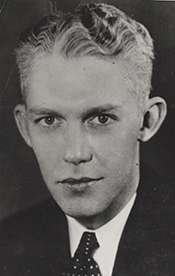 |
Democratic | Retired | ||||||
| 75 | January 3, 1937 – January 3, 1939 |
-hec.12922.jpg) |
Democratic | Elected in 1936 Lost re-election |
 |
Democratic | Elected in 1936 Lost renomination | ||
| 76 | January 3, 1939 – January 3, 1941 |
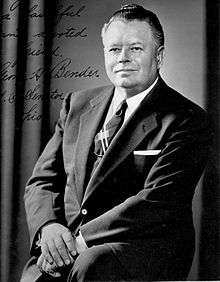 |
Republican | First elected in 1938 | 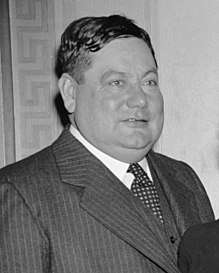 |
Republican | Elected in 1938 Lost re-election | ||
| 77 | January 3, 1941 – January 3, 1943 |
Re-elected in 1940 |  |
Democratic | Elected in 1940 Lost re-election | ||||
| 78 | January 3, 1943 – January 3, 1945 |
Re-elected in 1942 | Seat two was eliminated after the 1940 census. | ||||||
| 79 | January 3, 1945 – January 3, 1947 |
Re-elected in 1944 | |||||||
| 80 | January 3, 1947 – January 3, 1949 |
Re-elected in 1946 Lost re-election | |||||||
| 81 | January 3, 1949 – January 3, 1951 |
 |
Democratic | Elected in 1948 Lost re-election | |||||
| 82 | January 3, 1951 – January 3, 1953 |
 |
Republican | Elected in 1950 Redistricted to the 23rd district | |||||
In 1953, the seat was eliminated. It was restored in 1963.
| Cong ress |
Years | Representative | Party | Electoral history | |
|---|---|---|---|---|---|
| 88 | January 3, 1963 – January 3, 1965 |
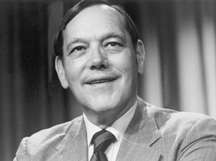 |
Republican | Elected in 1962 Retired to run for U.S. Senate | |
| 89 | January 3, 1965 – January 3, 1967 |
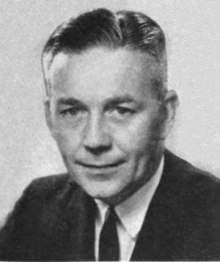 |
Democratic | Elected in 1964 Retired to run for Ohio Attorney General |
In 1967, the seat was eliminated, and constituted instead as Ohio's 24th congressional district, until its elimination after the Census of 1970.
Recent election results
The following chart shows historic election results. Bold type indicates victor. Italic type indicates incumbent.
| Year | Democratic | Republican | Other |
|---|---|---|---|
| From 1933 to 1941, there were two seats elected at large, on a general ticket. All the candidates ran in one race and the top two vote-getters won the two seats. | |||
| 1932 | √ Charles V. Truax: 1,206,631 √ Stephen M. Young: 1,200,946 | George H. Bender: 1,109,562 L. T. Palmer: 1,102,567 | Edward R. Stafford (P): 24,625 Alfred H. Stratton (P): 17,844 John Rehms (C): 7,050 William Hughey (C): 6,010 |
| 1934 | √ Charles V. Truax : 1,061,857 √ Stephen M. Young (inc.): 1,050,089 | George H. Bender: 905,233 L. L. Marshall: 871,432 | Ben Atkins (C): 13,972 John Marshall (C): 13,808 |
| 1936 (Special)[1] | √ Daniel S. Earhart: 1,479,284[2] | Benson Ogier: 1,057,473 | [Data unknown/missing.] |
| 1936 | √ John McSweeney: 1,553,059 √ Harold G. Mosier: 1,493,152 | George H. Bender: 1,226,147 L. L. Marshall: 1,121,370 | William C. Sandberg (C): 8,947 |
| 1938 | John McSweeney (inc.): 1,068,916 Stephen M. Young: 1,015,041 | √ George H. Bender: 1,177,982 √ L. L. Marshall: 1,101,193 | |
| 1940 | √ Stephen M. Young: 1,483,879 Francis W. Durbin: 1,384,745 | √ George H. Bender (inc.): 1,519,559 L. L. Marshall (inc.): 1,386,627 | |
| From 1943 through 1953 there was one member of the House from Ohio elected at large. | |||
| 1942 | Stephen M. Young:[3] 717,692 | √ George H. Bender (inc.): 945,995 | |
| 1944 | William Glass: 1,362,843 | √ George H. Bender (inc.): 1,542,422 | |
| 1946 | William M. Boyd: 871,660 | √ George H. Bender (inc.): 1,281,864 | |
| 1948 | √ Stephen M. Young: 1,455,972 | George H. Bender (inc.): 1,342,388 | |
| 1950 | Stephen M. Young (inc.): 1,237,409 | √ George H. Bender: 1,447,154 | |
| From 1953 through 1963, the at-large seat became the 23rd district. The at-large seat was created again after the 1960 census. | |||
| 1962 | Richard D. Kennedy: 1,164,628 | √ Robert Taft (Jr.): 1,786,018 | |
| 1964 | √ Robert E. Sweeney: 1,872,351 | Oliver P. Bolton: 1,716,480 | |
References
- ↑ Truax died in office in 1935.
- ↑ http://www.ourcampaigns.com/RaceDetail.html?RaceID=443573
- ↑ Young held an incumbency in the second at-large seat, which was eliminated for the 1942 election . Thus, there were two incumbents vying for this seat.
- Martis, Kenneth C. (1989). The Historical Atlas of Political Parties in the United States Congress. New York: Macmillan Publishing Company.
- Martis, Kenneth C. (1982). The Historical Atlas of United States Congressional Districts. New York: Macmillan Publishing Company.
- Congressional Biographical Directory of the United States 1774–present
- "Ohio's at-large congressional district". OurCampaigns.com.